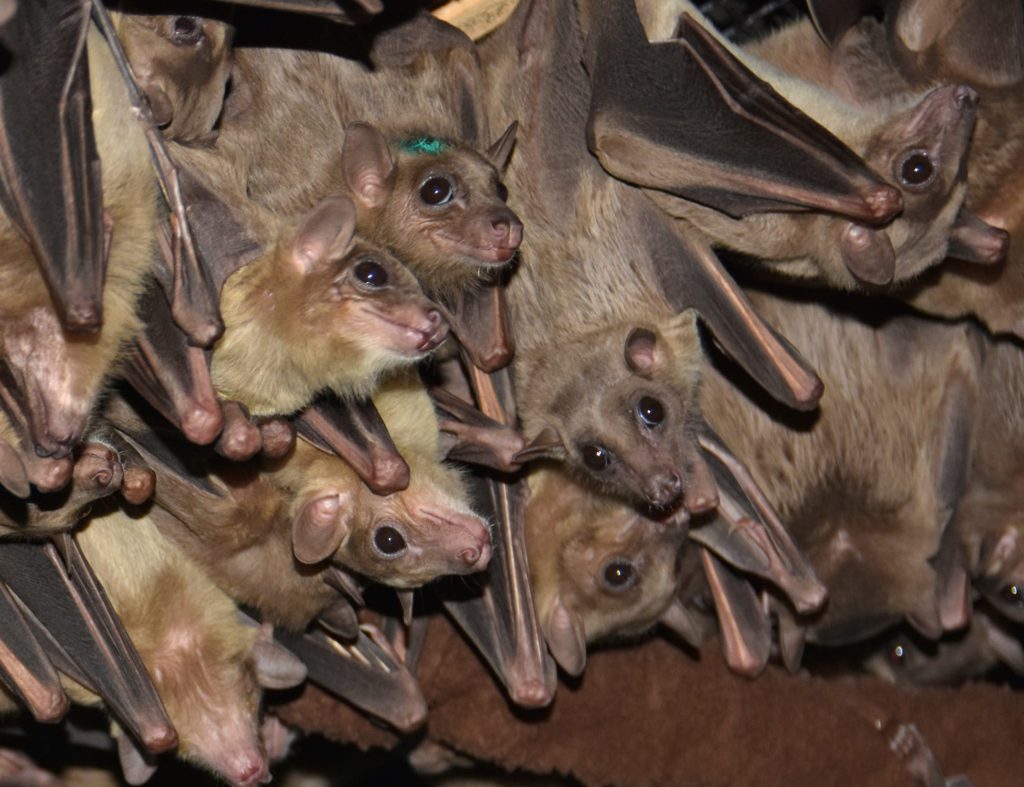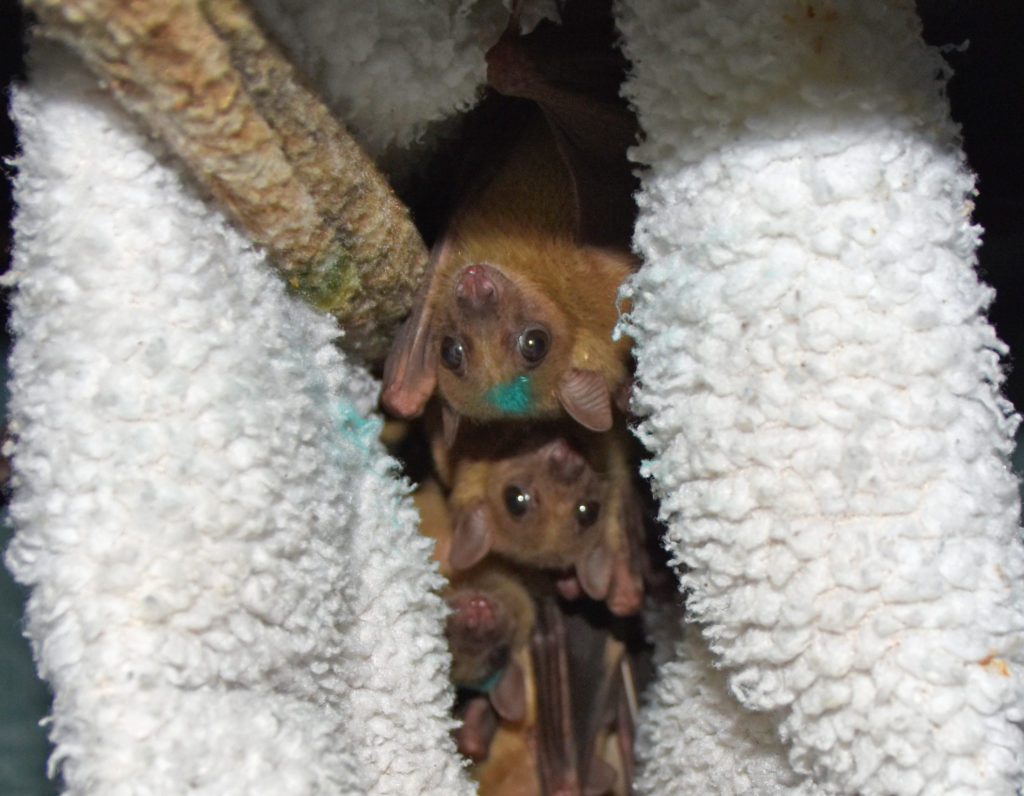In late December, we received a call from a distraught caregiver at a Museum of Natural History located in Florida. Apparently, a colony of Egyptian fruit bats had been at this museum and on display starting in 2005. This new caregiver was extremely upset as the condition of the bats at the museum was very poor. Additionally, the small cage they lived in was crawling with roaches and covered in mold. According to the caregiver, these poor bats had lived in this condition for some time. Many had died over the years, only to be replaced by bats purchased from the pet trade so the dwindling colony could start all over again. Only until the enclosure became unhealthy for humans to enter were the bats finally rescued, and it was only because this one caregiver cared enough to contact us.
Our first thought was to get the bats out of that horrid environment as quickly as possible. We reached out to our good friends at Forest Animal Rescue (FAR), located a few hours away from the museum. FAR graciously agreed to immediately house these bats and care for them until we could arrange transport to Texas. Three days later the bats were in the care of FAR. We received regular updates on their condition, including the fact that they were all very thin and balding when they arrived.
At FAR, the bats had an indoor-outdoor flight area for the first time in their lives. While most could not fly well, they immediately took advantage of the outdoor flight area with their feeble wings, and then refused to go into the indoor area where their food was located. When taken inside to show them where their food could be found, they immediately flew right back outside. So, their food was delivered to them outside instead, and when the weather became a bit too cold and they still refused to come inside, FAR supplied heaters in the area where they were choosing to roost. They were at FAR for several weeks and not once did they want to venture inside the indoor enclosure. We feel that it was because they had been without fresh air and sunshine and the ability to fly for so incredibly long that they could not bear to be without it.

Transport was arranged, and the bats arrived at Bat World Sanctuary just last week. The records that came with these bats are shockingly scant. They began in 2005, starting with a bulb that blew in the exhibit but “no bats were injured”. A later entry states that a bat had “food or something white” on his wing membrane and their veterinarian advised isolation. Another entry states that a bat developed “something black on his head” and the veterinarian advised giving it a week to see what happens.
Here are the only other records:
11/08 – A male bat found dead by the exhibit door
3/10 – Eight bats were necropsied to find the cause of death; no results were recorded
2012 – Five more Egyptian fruit bats were purchased from an exotic pet store

4/15 – Two bats died; suspected cause was cardiomyopathy, possibly related to nutrition
11/15 – Three bats began balding; one bat died from cardiovascular collapse possibly nutrition related
11/17 – Eleven bats now balding
5/20 – Naked male bat found weak and pale on the exhibit floor after being neutered
11/20 – Juvenile bat passed away while on exhibit
5/21 – Female bat found weak with an infected mammary gland; baby died
4/27/21 – Female bat spayed, became infected, died 5/27
5/5/21 – Female bat spayed, died same day
5/19/21 – Female bat spayed, died 5/24
5/21/21 – Female bat spayed, died same day
We are very thankful that someone finally spoke up so that the last of these bats could be saved, and are incredibly thankful to FAR for immediately accepting them into care. These poor animals – and all the others like them still stuck in hell – endure these conditions all for a fleeting glance by humans who won’t even remember them.
The bats that we received were very lucky, but there are so many like them who still need help. If you see bats in a captive setting that doesn’t look appropriate, please speak out. Notify those in charge that the bats in their care deserve better, spread the word so others can also speak out, and contact your local humane societies and government officials when needed.

Although one of the female bats arrived here with an infant pup, an ultrasound proved that none of the bats are pregnant. The mom and baby will receive the best of care, and when she is more settled, we will determine the sex of her baby. If her pup is a boy, he will be neutered when he is older. (Note: these bats are not native to the US and can never be released. If we were to allow breeding here at the sanctuary we would soon run out of room for other bats in need.) All of the bats were marked with a nontoxic temporary green paste so we can keep an eye on them as they settle in.

Although their fur may never grow back, we are so pleased to report that their mental scars are already healing. They are now flying well and enjoying a clean, enriched environment, nutritious food, expansive flight enclosures, and dozens of new friends who came from very similar conditions. They have nothing but happiness ahead of them.
If you would like to help the Florida 12 with a donation toward their care, please click here.


